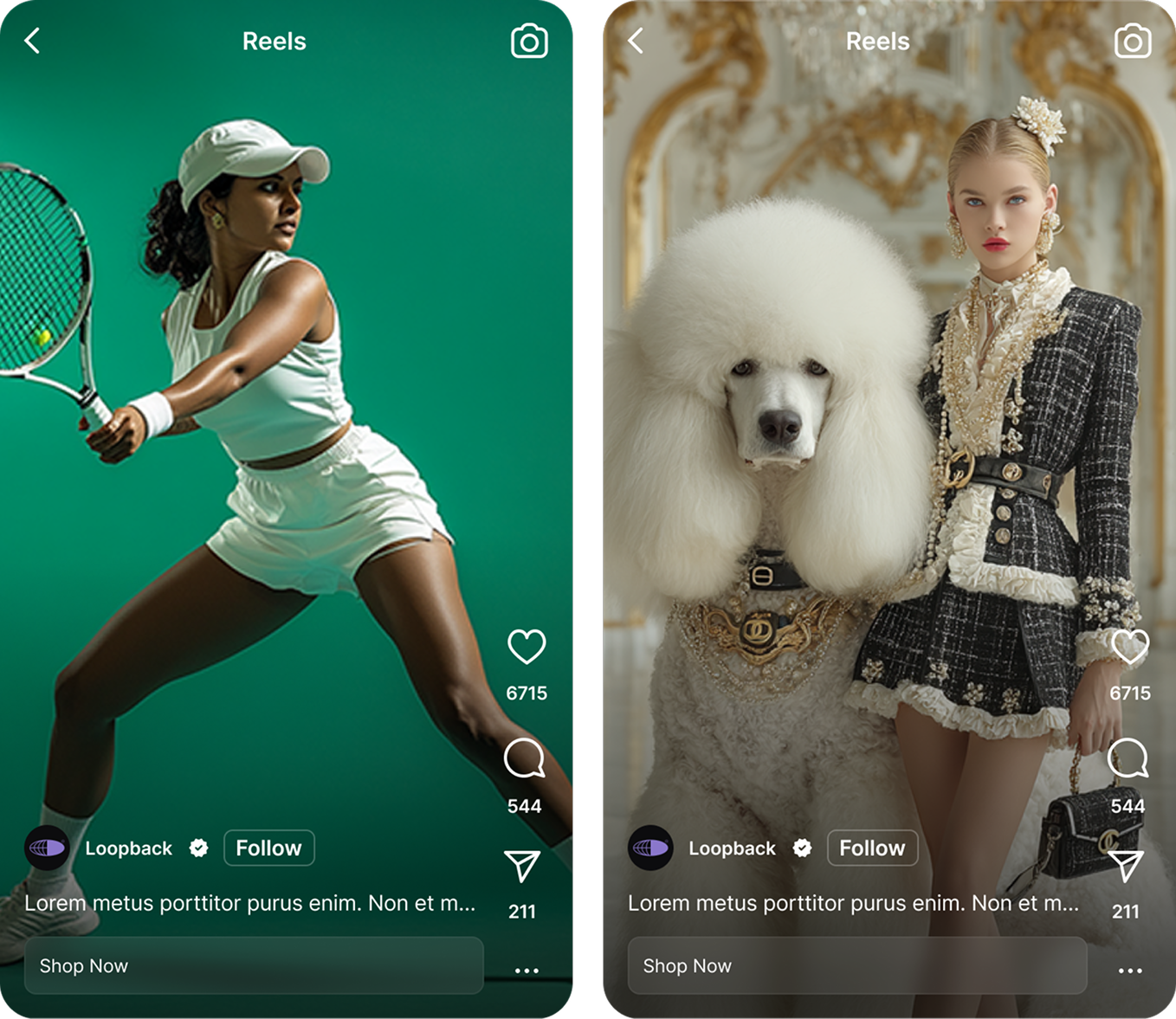Predicting Your Black Friday RoAS With AI – A Practical Guide

Black Friday’s signal volatility and auction pressure render manual forecasting insufficient; AI systems compress detection-to-decision time, convert weak signals into reliable RoAS predictions, and automate actions that protect margin and scale winners, as seen in reports of brands growing revenue with automated audience and creative exploration [1]. During peak, AI-driven personalization measurably raises conversion rates by shaping session-level decisions with real-time recommendations at catalog scale [2]. Predictive audience modeling consistently beats broad tactics, slashing cost per sale and lifting RoAS by focusing spend on high-propensity buyers discovered from behavioral data [3]. Competitive and assortment intelligence further tightens forecasts by calibrating price strategy to the market, improving revenue predictability when every basis point of conversion matters [5].
Build your Black Friday RoAS blueprint
Define objectives and boundaries
Set quantifiable targets by channel: revenue, profit, and cash contribution; decide brand protection thresholds; and codify acceptable CAC/CPA ceilings. Separate growth from guardrails by ring-fencing a baseline efficiency pool and a controlled exploration pool. Define forecast horizons and cadences: nowcast (intra-day), short-term (1–7 days), and scenario windows (2–6 weeks) with expected variance bands. Align executive expectations by publishing a forecast charter that clarifies KPIs, floors/ceilings, and escalation paths when variance breaches occur.
Attribution and calibration
Make in-platform signals decision-grade: implement Conversion API with deduplication, correct for conversion lag with de-lagged event tables, and reconcile platform-reported RoAS to a source-of-truth ledger. Run lightweight MMM or calibration checks as guardrails, and separate baseline vs promo lift. Include halo effects (email, brand search, affiliates) and post-view influence so your forecast reflects true incremental outcomes, not just last-touch events.
Taxonomy and granularity
Design a hierarchy mapped to business questions: search terms and clusters, product groups, PMax asset groups, paid social ad sets, creator/partnership ads, affiliates, and email segments. Keep naming conventions machine-readable (campaign_type|market|objective|asset|date) to speed feature creation and model refreshes. Ensure product feed and SKU-level profit data flow to forecasting tables for margin-aware decisions.
Constraints and risks to model explicitly
Bake in SERP volatility (including AI Overviews), impression share shifts, PMax opacity, supply limits, shipping cutoffs, and competitor undercuts. Add execution constraints: daily spend caps, CPA/ROAS guardrails, minimum presence on high-intent clusters, and inventory floors. Represent these as features and hard bounds for optimization so recommendations are feasible in production.
Decision workflow
Run a daily control loop: predict → compare to actuals → attribute variance → reallocate → test → document. On peak days, tighten the loop to intra-day checkpoints aligned to event lags. Maintain a change log (budgets, bids, creatives, prices) to enable post-mortems and train future models on decision-to-outcome causality.
Data and feature engineering that actually moves the forecast
Demand and intent signals
Cluster keywords into intent tiers (brand, high-intent non-brand, competitive, category discovery) and capture countdown modifiers. Engineer features like intent strength, demand velocity, and price sensitivity by merging search trends, auction diagnostics, and prior conversion elasticity. Track competitor mentions and SERP format changes that shift click-through probabilities.
Pricing, promo, and merchandising
Model dynamic price gaps to top rivals, promo depth/duration, bundle logic, stock levels/backorder risk, and shipping thresholds. Encode margin by SKU, promo leakage, and markdown cadence. Use elasticity curves to anticipate conversion lift from price moves vs inventory exposure, and feed this into scenario planning.
Channel and creative signals
De-lag conversions and build features from ad metadata: creative embeddings, hook taxonomies, scroll-depth and click mapping, placement mix, and product feed quality. Track creative fatigue and novelty windows to time rotations. Capture creator- or partnership-ad-driven audiences as distinct cohorts for uplift modeling.
Site experience signals
Include predictive site search queries, recommendation clicks, category sequencing, load performance, checkout friction, and payment method mix. These features often explain intra-day RoAS variance when platforms lag.
External and contextual variables
Layer calendar events, payday effects, weather for category-sensitive items, shipping cutoff proximity, return policy prominence, and competitor promo starts. Create proximity features (hours to event/cutoff) to catch inflection points in conversion rates and AOV.
Localization that reduces variance
Localize feature sets by market: audience size, platform mix, creator resonance, price elasticity, tax/shipping frictions, and promo norms. For example, Zelesta’s ROI-driven expansion case study shows how AI recommendations selected market-fit creators across six European countries, turning influencer activity into a repeatable acquisition channel. Encode country-level dummies and interaction terms (e.g., creative style × market) to stabilize cross-country forecasts and prevent overfitting to one locale.
Zelesta’s ROI-driven expansion case study
 Learn more
Learn more
Modeling RoAS: from nowcasting to scenario planning
Core models
For nowcasting, use short-horizon gradient boosting or lightweight time series (e.g., dynamic regression) by campaign/asset group to anticipate intra-day RoAS when platform reporting lags. For 7–28 day forecasting, combine multivariate time series with causal features: promo calendars, price gaps, supply constraints, and competitor signals. Add uplift models to estimate incremental impact of audiences, creatives, and offers, feeding outputs into budget optimization.
Scenario engine
Build what-if modules for price and promo depth, inventory ceilings, creative fatigue, AI Overview SERP-share shifts, and competitor spend shocks. Productionize three cases (optimistic, base, conservative) with elasticity ranges and confidence intervals. Expose the levers—price, promo timing, creative rotation, and channel mix—so leadership can align quickly on risk vs reward.
Optimization under constraints
Allocate budgets using predicted marginal RoAS while respecting CPA ceilings, inventory/margin floors, and brand protection. Protect brand terms, maintain minimum presence on high-intent non-brand clusters, and cap spend in fragile inventory segments. Enforce pacing that prioritizes high-confidence windows and pre-funds exploration pools for discovery.
PMax, visibility, and attribution gaps
Bridge PMax opacity by mapping asset-group inputs (creative, feed, audience signals) to downstream site metrics and controlled incrementality tests. Blend channel-level data with experiment readouts to calibrate predictions. Where visibility is limited, use proxy features and Bayesian updates to keep estimates stable without overreacting to noise.
The test-and-learn engine that feeds your model
Rapid creative and offer exploration
Use multi-armed bandits and platform automation (e.g., Advantage+-style systems) to continuously explore creatives, hooks, bundles, and value props, throttling losers quickly. Predefine stop-loss rules and ramp schedules. Feed exploration results back into uplift models so your budget decisions reflect fresh evidence, not stale assumptions.
Personalization loops that lift conversion
Treat product recommendations, dynamic merchandising, and triggered messaging as measurable levers. Log on-site personalization exposures as features so the RoAS model captures additive conversion effects. Track creative-persona alignment and audience overlap to reduce cannibalization and improve incremental reach.
Case example and feedback into models
Authenticity plus automation scales efficiently on peak weeks. The LYMA case study illustrates how recruiting credible storytellers and amplifying via Advantage+ Shopping reached an underserved audience and achieved strong RoAS. Use this pattern: source creators aligned to pain points, translate stories into modular hooks, launch via automated exploration, and pipe creator- and audience-level deltas into uplift models. Over time, the model learns which narratives and formats compound, informing both pre-peak planning and intra-day pivots.
LYMA case study
 Learn more
Learn more
Experiment design
Predefine success metrics (incremental revenue, conversion rate delta, AOV change), power targets, and guardrails. Log all variant metadata (creative attributes, offer mechanics, audience definitions) to enable feature reuse and meta-analysis. Standardize a weekly review of test outcomes and model parameter updates to ensure learning compounds into forecast accuracy.
Turn predictions into profit: pacing, bidding, and mix
Budget allocation playbook
Fund units with the highest predicted marginal RoAS under CPA and stock constraints. Pre-load exploration budgets in the countdown week to harvest rising intent and reserve surge spend for high-confidence hours. Sequence budget unlocks based on observed variance to forecast: stabilize first, then scale. Maintain a carve-out for discovery so the model continues to find new winners even as peak demand crests.
Bidding and guardrails
Use inventory-aware bidding and price-gap triggers. Enforce SERP coverage targets for brand and top non-brand clusters and brand protection thresholds during competitor surges and AI Overview volatility. Tie bid multipliers to elasticity: when inventory tightens or margins compress, switch objectives (e.g., from revenue to profit) and tighten CPA caps automatically.
Creator and partner distribution as a performance lever
Creator-derived audiences and partnership ad formats consistently lower acquisition costs and stabilize funnel efficiency. The Handyhuellen case study shows how targeting creator-based audiences and layering Partnership Ads reduced CPA, freeing budget to flow to highest-ROAS units. Encode these CPA improvements as gains and constraints in your optimizer so the forecasted frontier reflects real distribution advantages, not just paid channel dynamics.
Handyhuellen case study
 Learn more
Learn more
Execution cadence
Intra-day: pacing checks vs prediction bands with alerting on variance and stock risk. Daily: review forecast errors, attribute drivers, rotate creatives, and reallocate budgets. Weekly: refresh scenarios and elasticities. Peak days: run war-room sprints with pre-agreed guardrails and decision rights to accelerate action without breaking constraints.
The Black Friday AI command center: instrumentation, alerts, and post-mortem
Live dashboards and alerts
Instrument leading indicators: impression share, click-through, add-to-cart rate, on-site search conversion, and checkout completion. Track RoAS prediction vs actual bands, stockouts, price-gap breaches, and bot/chat engagement-to-order conversion. Trigger alerts on variance, deteriorating elasticities, and sudden SERP or competitor-spend shocks. Visualize decision levers alongside impact so operators can act in minutes, not hours.
Data quality and resilience
Run event stream QA and lag diagnostics daily. Maintain fallback nowcasting models and cached elasticities to survive signal loss. Apply privacy-first measurement (server-side tags, modeled conversions, deduplication) to keep predictions dependable as platform policies evolve. Document data lineage to speed incident response when anomalies strike at peak.
Measurement framework
Complement attribution with lightweight MMM for guardrails, and structure geo or audience holdouts to estimate incrementality. For personalization features (recommendations, triggered messages), run pre-post or switchback tests and log exposures for modeling. Align reporting to finance: profit-weighted RoAS, contribution margins, and cash conversion cycles to guide real budget decisions.
Post-mortem and next-year prep
Archive experiments and annotate anomalies (inventory, platform outages, SERP changes). Convert learnings into features and scenario triggers, and refresh playbooks for the 100-day runway to the next peak. Close the loop by retraining models on Black Friday data, promoting robust features into your standard stack, and scheduling dry runs two months pre-peak. If you’re ready to operationalize this framework with creator-driven distribution and AI forecasting, request a neutral walkthrough of tooling options and workflows to fit your stack.
Get started with The Cirqle today.
Give your team the power and speed they need to find the right partners and grow your brand.
%201.avif)






